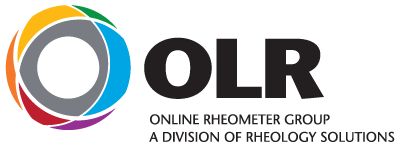Energy Savings Grants
Rheology Solutions OLR customers may be eligible for funding by the AUSTRALIAN Federal Government through “The Clean Technology Investment Program”, or under the “Clean Technology Food and Foundries Investment Program”.
- The Clean Technology Investment Program provides grants to Australian Manufacturing businesses to invest in energy efficient capital equipment and low emissions technologies, processes and products in order to maintain the competitiveness of Australian Manufacturing businesses in a carbon constrained economy. It is a $800 million competitive, merit-based grants program, providing grant funding over a seven year period from 2011-12 to 2017-18.
- The Clean Technology Food and Foundries Investment Program provides grants to existing Australian food and foundry manufacturing businesses to invest in energy efficient capital equipment and low emissions technologies, processes and products in order to maintain the competitiveness of Australian manufacturing businesses in a carbon constrained economy. It is a $200 million competitive, merit-based grants program, providing grant funding over a six year period from 2011-12 to 2016-17.
Both of these programs have similar rules and requirements for applicants, the difference between them being that the latter is aimed specifically at the Food and Foundries industries in Australia, and the former covers the remaining Manufacturing businesses in Australia. The grants are intended to subsidise the purchase of new plant and equipment technologies by Australian businesses, with the aim of reducing the business’ energy consumption through the application of those new technologies. Businesses can qualify for only one of these funding streams, but not both.
The Rheology Solutions OLR can qualify for funding through this stream because it improves efficiency through reducing waste and reprocessing (or unnecessary over-processing) by measuring the quality of the manufactured product on-line in real time. This replaces the requirement of laboratory testing, which can be costly both in terms of processing time and energy input before products can be released for the next processing step, or for final filling or storage.
Federal funding must be matched by the applicant business according to the turnover of the business (based on the turnover of an individual site for multi-site and/or multi-national businesses). For example, if the turnover of a business is less than AU$100 million, and the business is deemed eligible, then the Federal Government will contribute 50% of the cost of the new energysaving technology:
The minimum grant that can be applied for is $25,000 (there is no maximum) and a large portion of project and installation costs are eligible for matching funding under these government schemes.
- Pre-project costs relating to preparatory work: to qualify as eligible expenditure, pre-project costs must be incurred within the 12 month period prior to the lodgement of an eligible application. Eligible pre-project costs are limited to the lesser of five per cent of total eligible project costs or $50,000.
- Project costs relating to undertaking eligible activities within the project period.
- Post-project costs relating to your end of project reporting obligations: only post-project costs incurred and paid up to 15 months after the agreed date the project was completed are eligible.
ELIGIBLE PROJECT COSTS INCLUDE:
- direct or contract labour costs for employees and contractors working on the project
- plant and equipment
- contract costs for services provided by third parties such as energy audits, savings measurement and verification services, technical expertise, staff training packages and turn-key commissioning expenses
- non-labour commissioning costs including energy consumption during commissioning trials, spare and replacement parts etc
- other costs which are not plant and equipment or commissioning related (for example, building modification)
- costs of an independent audit of eligible project expenditure
- any non labour or contract costs associated with energy measurement and verification activities such as temporary site meters.


